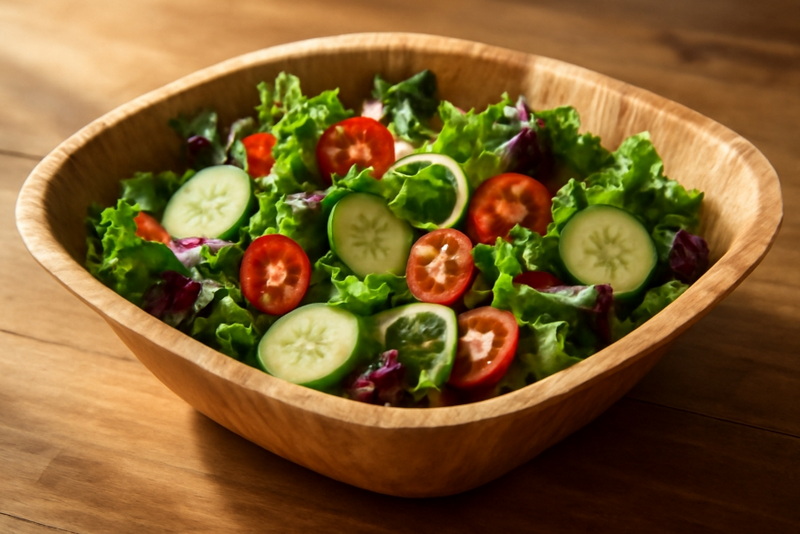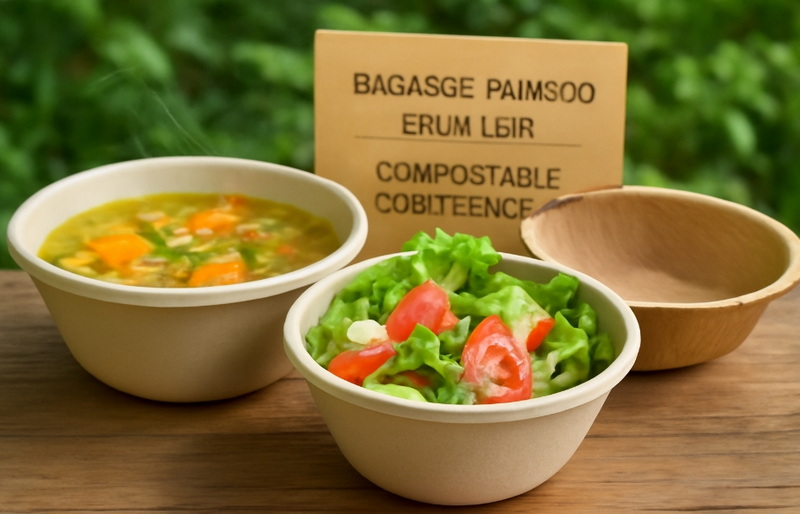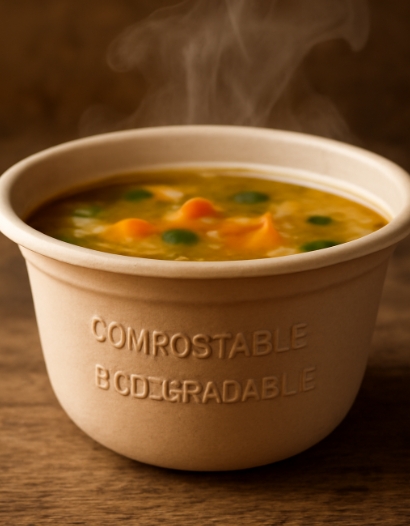
Content Menu
● The Rise of Eco-Friendly Disposable Bowls
>> Why the Shift to Sustainable Tableware?
>> Composting: Closing the Loop
● Materials Matter: What Makes a Bowl Eco-Friendly?
>> Bagasse (Sugarcane Fiber) Bowls
>> Bamboo Bowls
>> Palm Leaf Bowls
>> Recycled Paper and PLA-Lined Bowls
● Detailed Comparison of Eco-Friendly Materials
>> Bagasse vs Bamboo
>> Palm Leaf vs PLA-Lined Paper Bowls
● Performance: Can Eco-Friendly Bowls Handle Soups and Salads?
>> Heat Resistance and Durability
>> Leak-Proof Design
>> Large Capacity Options
>> Versatility
● Innovations in Eco-Friendly Disposable Bowls
● Composting: The End-of-Life Advantage
>> How Composting Works
>> Environmental Impact
● User Experiences and Testimonials
● Tips for Maximizing the Use of Eco-Friendly Disposable Bowls
● Addressing Common Concerns
>> Are Eco-Friendly Bowls Durable Enough for Takeout?
>> What About Allergies or Sensitivities?
>> Can These Bowls Be Used for Freezing?
● Environmental Impact: Beyond Composting
● Future Trends in Sustainable Tableware
● Real-World Applications: Where Eco-Friendly Bowls Shine
● Conclusion
● FAQ
>> 1. Are eco-friendly disposable bowls suitable for hot soups?
>> 2. Can these bowls handle large servings of salad?
>> 3. How do I compost used disposable bowls at home?
>> 4. Are eco-friendly disposable bowls safe for microwave use?
>> 5. What certifications should I look for when choosing compostable bowls?
As sustainability becomes a central concern for both consumers and businesses, the demand for eco-friendly disposable tableware has surged. Among the most versatile and widely used items are disposable bowls, which must deliver on both environmental responsibility and functional performance. But can eco-friendly disposable bowls—especially those boasting large capacity, composting capability, and robust construction—truly handle the rigors of serving soups and salads? This comprehensive guide explores the materials, performance, and practical considerations of using compostable, eco-friendly disposable bowls for everything from hot, hearty soups to fresh, crisp salads.

The Rise of Eco-Friendly Disposable Bowls
Why the Shift to Sustainable Tableware?
The global movement toward sustainability has prompted food service providers, event organizers, and households to rethink their reliance on single-use plastics. Traditional disposable bowls, often made from plastic or foam, contribute significantly to landfill waste and environmental pollution. In contrast, eco-friendly disposable bowls are crafted from renewable resources like bamboo, bagasse (sugarcane fiber), palm leaves, and recycled paper, offering a compostable and biodegradable alternative that aligns with green values.
Composting: Closing the Loop
A key feature of these sustainable bowls is their compostability. After use, they can be diverted from landfills and instead broken down into nutrient-rich compost, returning valuable organic matter to the earth and supporting circular waste management systems.
Materials Matter: What Makes a Bowl Eco-Friendly?
Bagasse (Sugarcane Fiber) Bowls
Bagasse is a by-product of sugarcane processing. Bowls made from bagasse are sturdy, heat-resistant, and naturally compostable. They handle both hot and cold foods, making them ideal for soups and salads. Their robust construction prevents leaks and deformation, even when serving hot liquids or heavy salads.
Bamboo Bowls
Bamboo is a fast-growing, renewable resource. Bowls made from bamboo are lightweight yet strong, offering natural resistance to liquids and heat. They are also compostable and break down without leaving harmful residues.
Palm Leaf Bowls
Palm leaf bowls are crafted from naturally fallen leaves, requiring minimal processing. They are inherently sturdy, heat-resistant, and leak-proof, making them suitable for both hot soups and cold salads. Their unique natural patterns also add a touch of elegance to any table setting.
Recycled Paper and PLA-Lined Bowls
Some eco-friendly bowls use recycled paper with a PLA (plant-based plastic) lining for added leak resistance. These are suitable for takeout and can be composted in industrial facilities, though their compostability may depend on local infrastructure.
Detailed Comparison of Eco-Friendly Materials
Bagasse vs Bamboo
Bagasse bowls are known for their excellent heat resistance and sturdiness, making them a top choice for hot soups and heavy salads. Bamboo bowls, while also strong and heat-resistant, tend to be lighter and more flexible, which can be advantageous for portability and ease of handling. However, bamboo bowls may sometimes require additional processing to enhance their water resistance compared to bagasse.
Palm Leaf vs PLA-Lined Paper Bowls
Palm leaf bowls offer a natural aesthetic with unique patterns, making them popular for upscale events and eco-conscious consumers who value presentation. PLA-lined paper bowls provide a smooth surface and are often more affordable, but their compostability depends heavily on industrial composting facilities, which may not be available everywhere.
Performance: Can Eco-Friendly Bowls Handle Soups and Salads?
Heat Resistance and Durability
A major concern with disposable bowls is their ability to withstand hot foods. High-quality eco-friendly bowls are engineered to endure elevated temperatures without softening, warping, or leaking. Bagasse and palm leaf bowls, in particular, excel in this area, making them suitable for hot soups, stews, and even microwave reheating.
Leak-Proof Design
Whether serving a hearty minestrone or a vinaigrette-dressed salad, leak resistance is crucial. Compostable bowls are often designed with thicker walls and reinforced rims to prevent leaks and spills, ensuring safe and convenient handling.
Large Capacity Options
For gatherings, catering, or restaurants, large capacity eco-friendly disposable bowls are essential. Many suppliers offer bowls in sizes ranging from 12 ounces to over 750 ml, suitable for generous portions of soup or salad. These large bowls maintain their structural integrity even when filled with substantial servings.
Versatility
Eco-friendly disposable bowls are not limited to soups and salads. Their strength and resistance to moisture make them suitable for cereals, desserts, pasta, and even heavier dishes. They can be used in diverse settings, from casual picnics to upscale events.
Innovations in Eco-Friendly Disposable Bowls
Recent advancements in material science have led to the development of bowls that combine multiple sustainable materials to optimize performance. For example, some manufacturers are blending bagasse with bamboo fibers to create bowls that are both lightweight and exceptionally durable. Additionally, coatings derived from natural waxes or plant oils are being used to enhance leak resistance without compromising compostability.

Composting: The End-of-Life Advantage
How Composting Works
Compostable bowls are designed to break down in commercial composting facilities, transforming into nutrient-rich soil within a few months. Some materials, like palm leaf and bagasse, can also decompose in home composting systems, though the process may take longer.
Environmental Impact
By choosing compostable bowls, users significantly reduce their contribution to landfill waste and plastic pollution. The use of renewable materials and the ability to return nutrients to the soil make these products a cornerstone of sustainable dining and food service.
User Experiences and Testimonials
Many users report satisfaction with the performance of eco-friendly disposable bowls, especially noting their ability to hold hot soups without leaking or warping. Event organizers appreciate the ease of cleanup and the positive feedback from guests who value sustainability. Some consumers have noted that while these bowls are slightly more expensive, the environmental benefits and quality justify the cost.
Tips for Maximizing the Use of Eco-Friendly Disposable Bowls
- Avoid prolonged exposure to very hot liquids to extend bowl integrity.
- Store bowls in a cool, dry place to prevent warping before use.
- When composting at home, cut bowls into smaller pieces to speed up decomposition.
- Pair bowls with compostable cutlery and napkins for a fully sustainable dining experience.
Addressing Common Concerns
Are Eco-Friendly Bowls Durable Enough for Takeout?
Yes, many eco-friendly disposable bowls are designed specifically for takeout and delivery services. Their sturdy construction and leak-proof features make them reliable for transporting soups and salads without spills.
What About Allergies or Sensitivities?
Eco-friendly bowls made from natural materials are generally safe for most users. However, individuals with specific allergies to bamboo or palm may want to verify the material composition before use.
Can These Bowls Be Used for Freezing?
Some compostable bowls can withstand freezing temperatures, but it is best to check manufacturer guidelines. Freezing may affect the structural integrity of certain materials.
Environmental Impact: Beyond Composting
Choosing eco-friendly disposable bowls also reduces reliance on fossil fuels used in plastic production. The cultivation of renewable materials like bamboo and sugarcane supports sustainable agriculture and can contribute to carbon sequestration. Moreover, reducing plastic waste helps protect marine life and ecosystems from pollution.
Future Trends in Sustainable Tableware
The future of disposable tableware is leaning towards even more innovative materials such as mycelium-based bowls and edible tableware. These emerging technologies promise to further minimize waste and environmental impact while maintaining convenience and functionality.
Real-World Applications: Where Eco-Friendly Bowls Shine
- Restaurants and Cafés: Ideal for dine-in and takeout, especially for establishments emphasizing sustainability.
- Catering and Events: Perfect for large gatherings, weddings, and corporate functions where convenience and environmental responsibility are priorities.
- Home Use: Great for parties, picnics, or everyday meals, especially for those seeking to minimize their ecological footprint.
- Food Trucks and Street Vendors: Provide a green alternative for serving hot and cold foods on the go.
Conclusion
Eco-friendly disposable bowls have evolved into a practical, reliable, and sustainable solution for serving both soups and salads. With options made from bagasse, bamboo, palm leaves, and recycled paper, these bowls offer large capacity, robust construction, and excellent heat and leak resistance. Their composting capability ensures a minimal environmental footprint, making them the preferred choice for eco-conscious consumers and businesses alike.
Switching to compostable, large capacity eco-friendly disposable bowls is not just a trend—it's a responsible step toward a greener future. Whether you're hosting a large event or simply enjoying a meal at home, these bowls deliver on both performance and sustainability.

FAQ
1. Are eco-friendly disposable bowls suitable for hot soups?
Yes, high-quality eco-friendly disposable bowls made from bagasse, bamboo, or palm leaf are designed to withstand hot temperatures without warping or leaking. They are ideal for serving hot soups and stews.
2. Can these bowls handle large servings of salad?
Absolutely. Many eco-friendly disposable bowls come in large capacities, making them perfect for generous servings of salads, pasta, or other dishes. Their sturdy construction ensures they won't collapse under the weight of heavy or saucy foods.
3. How do I compost used disposable bowls at home?
Most compostable bowls break down best in commercial composting facilities. However, palm leaf and bagasse bowls can also decompose in home compost bins, especially if cut into smaller pieces and mixed with other organic waste.
4. Are eco-friendly disposable bowls safe for microwave use?
Many compostable bowls are microwave-safe, especially those made from bagasse and bamboo. Always check the manufacturer's guidelines to ensure safe reheating.
5. What certifications should I look for when choosing compostable bowls?
Look for certifications such as BPI (Biodegradable Products Institute) or compliance with ASTM D6400 standards. These indicate that the bowls meet strict criteria for compostability and environmental safety.

















